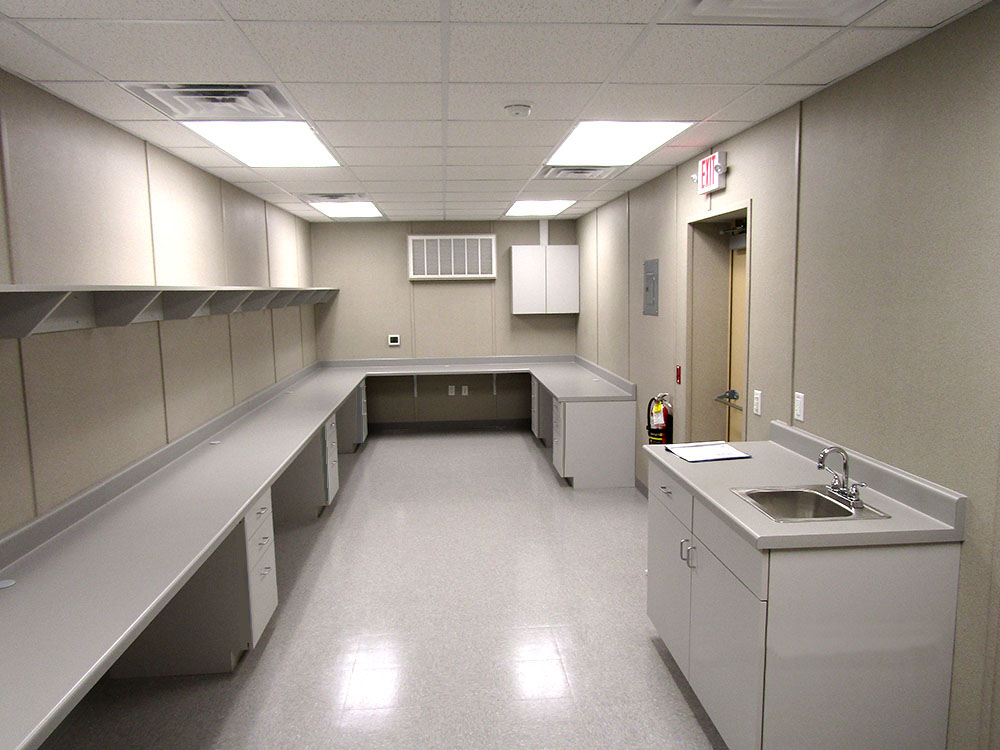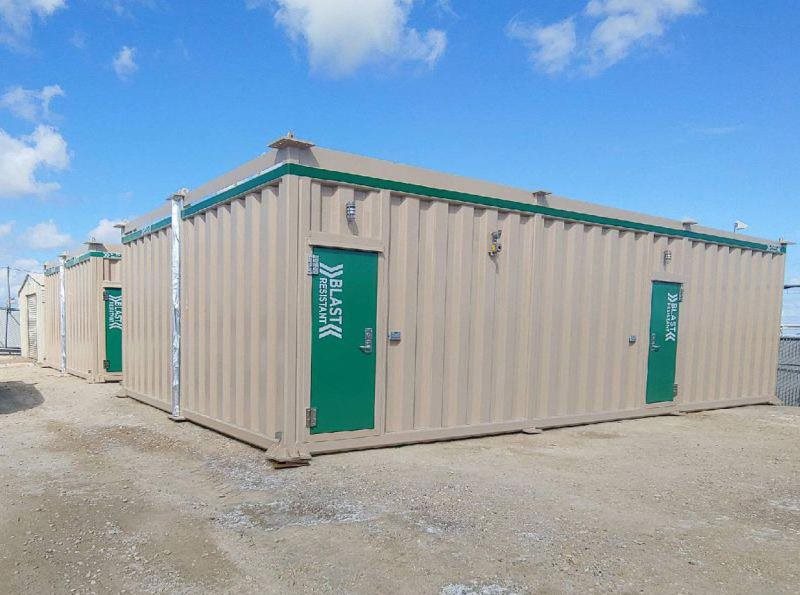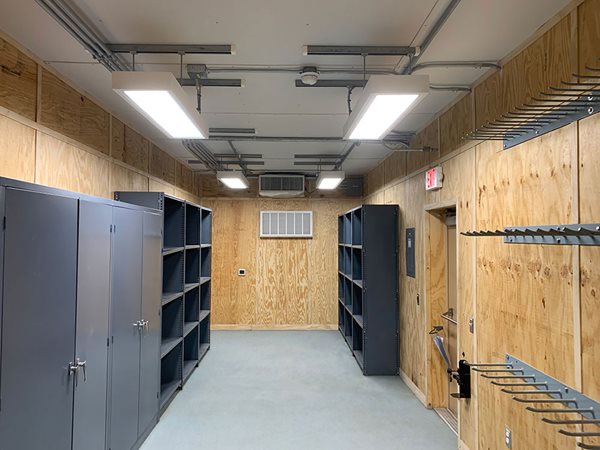Blast-Proof Building
The Industry Leader of Blast-Proof Building* Rentals
Often referred to as blast-proof building or explosion-resistant building, *the correct industry terminology is Blast-Resistant Building (BRB) or Blast-Resistant Module (BRM).
When it comes to protecting personnel and equipment, HUNTER is the #1 name in safety for blast proof buildings in industrial areas, conflict zones and disaster preparedness.
- Engineered to intense safety and blast specifications
- Large inventory of single module blast-roof buildings and multi-unit complexes
- Easy Roll-Off Delivery. No crane required for most units!
Blast-Proof Buildings Available for Quick Delivery:

Our 20' and 40’ blast proof buildings are available in a variety of layouts.

Combine multiple blast proof buildings to create virtually endless combinations.

Specialty blast proof buildings protect personnel and equipment.
We make blast-proof building rental easy. Watch video below!
More about Blast-Proof Buildings
Are blast-proof buildings and blast-resistant buildings the same?
Often referred to as blast-proof building or explosion-resistant building, *the correct industry terminology is Blast-Resistant Building (BRB) or Blast-Resistant Module (BRM). So called "blast-proof buildings" are engineered to withstand a great deal of pressure and force from an event, such as a blast or explosion. If the term blast-proof is used, it implies there will be no damage, which is nearly impossible.
What are blast-proof buildings?
The primary purpose of a blast proof building is to protect occupants and minimize damage in the event of an explosion. As discussed above, the preferred industry term is blast-resistant. The design considerations and construction techniques used in blast-resistant buildings are aimed at reducing the transmission of blast waves, minimizing the effects of flying debris, and preventing structural failure. Key features of a blast-proof building:
- Structural Reinforcement: Blast proof buildings incorporate reinforced materials that enhance the structural integrity. Materials include concrete, steel and other specialized composites in the form of thick walls, columns and floors.
- Blast-Resistant Windows: During an explosion, windows are often a weak point in building structures. Blast-resistant windows are designed with laminated or tempered glass and a robust framing system to prevent shattering.
- Energy Absorption and Dissipation: The design of blast-proof buildings focuses on dissipating the energy produced by an explosion. This can be achieved through the strategic placement of shock-absorbing materials, such as rubberized pads or damping systems, within the building's structure.
- Ventilation Systems: Blast proof buildings incorporate specialized ventilation systems that are designed to redirect blast pressures and prevent the entry of toxic gases or airborne contaminants.
- Redundancy and Compartmentalization: Blast resistant buildings often employ redundancy and compartmentalization strategies. By dividing the building into smaller compartments with reinforced walls, floors, and ceilings, the spread of damage can be limited, and the overall structural integrity can be maintained.
- Enhanced Security Measures: In addition to blast resistance, these buildings may also incorporate advanced security measures such as surveillance systems, blast-resistant barriers, access controls, and blast-resistant doors to further protect occupants from potential threats.
What is the response level of Hunter Onsite's blast-proof buildings?
All Hunter Onsite blast proof buildings (blast-resistant) have a medium to low response level, and are API PR 752/753/756 compliant.
How is a blast-proof building delivered?
We make blast-proof building rental and setup easy. For most single blast-proof buildings, once it arrives to your location there is easy roll-off delivery, with no crane required!
Other Rental Facilities:
Blast-Proof Module
Blast-Proof Containers
Blast-Resistant Portable Building